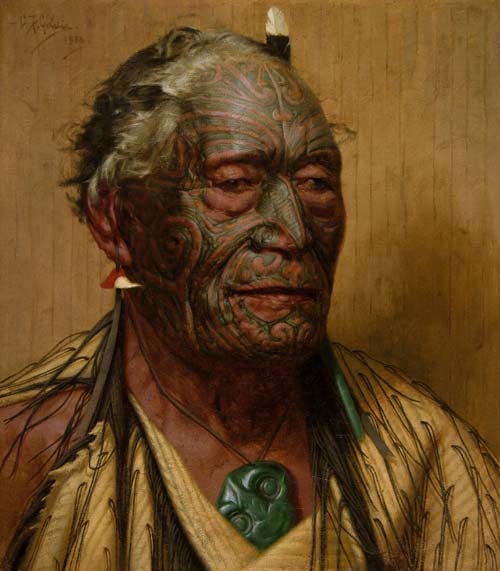
Painted by Charles Goldie in 1934, this portrait shows the complexity of the moko (facial tattoo) of Ngāpuhi leader Tāmati Wāka Nene. Māori called kauri gum kāpia and used it for tattooing. They burnt the gum to get soot, which they ground into a very fine powder and then mixed with animal fat or oil before applying it to facial cuts.
Te whakamahi i tēnei tūemi
Auckland Art Gallery – Toi o Tāmaki
Oil painting by Charles Goldie
Permission of Auckland Art Gallery Toi o Tāmaki must be obtained before any re-use of this image.











Tāpiritia te tākupu hou